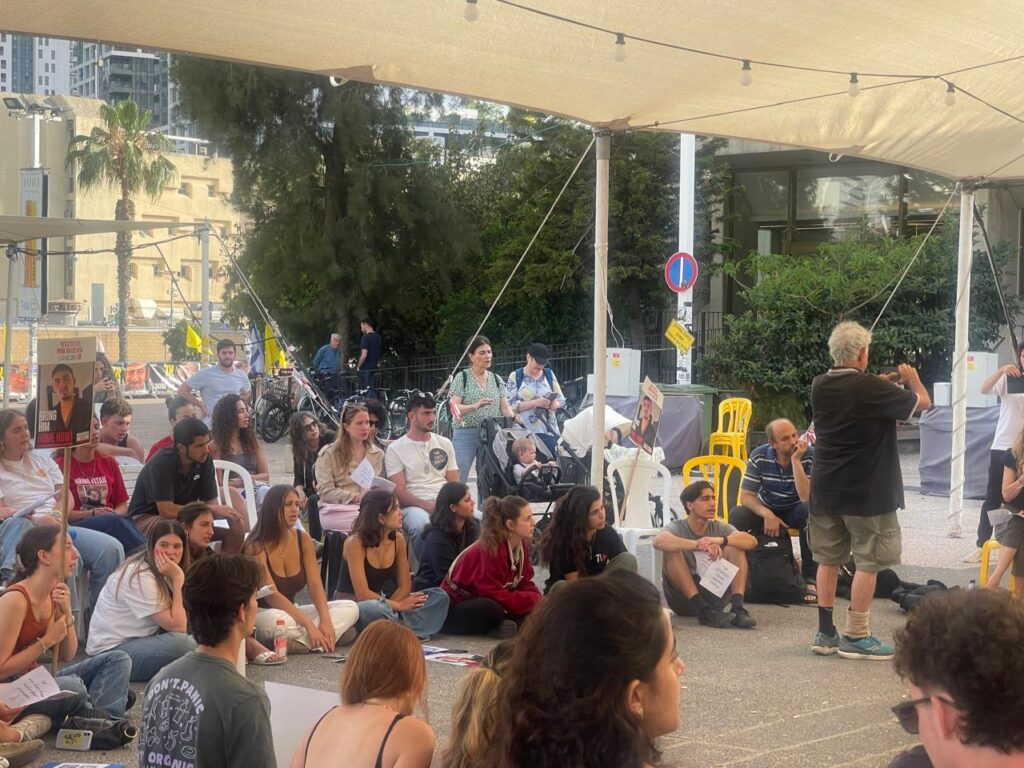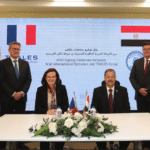NAIROBI, Kenya May 20– Amid the scorched remains of torched vehicles and shattered dreams at the site of the Nova music festival massacre, one woman’s story stood out — not only for the terror she endured, but for the extraordinary strength she represents.
Mazal Tazazo, a 35-year-old Ethiopian-Israeli, survived the October 7, 2023, Hamas-led assault by pretending to be dead. As gunmen from Gaza stormed the open-air Supernova Sukkot Gathering near Kibbutz Re’im, spraying bullets into fleeing crowds, Tazazo lay motionless among the lifeless bodies of her closest friends — Danielle and Yochai — whispering desperate prayers and clutching onto the last threads of life.

“I only survived because I played dead,” she recounted emotionally during a recent engagement with a delegation of African journalists visiting Israel. “Even when one of the terrorists lifted my face to check if I was alive, I held my breath and kept my eyes shut. I thought he would shoot me. But he left.”
Struck with the butt of a rifle, Tazazo was injured, physically and emotionally. She remembers the agonising sounds — the screams, gunfire, and flames — as the gunmen set vehicles alight and executed dozens. At one point, she accepted death. “But something inside me said not yet. Not today.”
Later, during a lull in the violence, she sprinted into a nearby car, took cover, and was eventually rescued. “That moment I ran for my life — I knew I had survived, but a part of me had died too,” she said quietly.
A Symbol of a Nation’s Pain — and Power
More than 360 young people were killed at the Nova festival that morning, part of a wider, coordinated assault by Hamas and affiliated militant groups on Israeli communities near the Gaza border.
In total, Israeli authorities say 1,195 people were killed in the October 7 attack — including 736 civilians, among them 36 children, and 379 members of the Israeli security forces. An estimated 250 people were abducted and taken into Gaza.

For Tazazo, the loss was personal. For the nation, it was collective. The country was thrust into mourning, fury, and war. Since then, Israel has waged a relentless military campaign in Gaza aimed at dismantling Hamas and recovering the hostages.
But the cost has been staggering. According to Gaza’s Hamas-run Health Ministry, over 35,000 Palestinians have been killed — the majority women and children. Entire neighbourhoods have been flattened. The humanitarian situation is dire, with aid agencies warning of famine, disease, and displacement on an unprecedented scale.
Yet in Israel, the grief remains raw — and the wounds open. And voices like Mazal’s continue to cut through the noise.
“I wanted to give up many times. Sometimes, I still do,” she admitted. “But my 10-year-old son is my hope. He gives me a reason to live.”
The Hostages: Israel’s Unhealed Wound
Of the approximately 250 hostages taken on October 7, many were freed during a short-lived ceasefire deal in November. But as of May 2025, Israel says 58 people remain in captivity. Of those, only 23 are believed to still be alive.
In Tel Aviv’s Hostages Square, daily vigils continue. Families hold photos of their loved ones — from toddlers to grandparents — demanding action from their government and the international community. The yellow-ribbon campaign for their return remains one of the most potent and painful symbols of the war.

Among the captives still unaccounted for is 22-year-old Aharon Zabar, a friend of Tazazo from the Nova community. “We danced together that night,” she said, her voice cracking. “He was full of life. And now, we don’t know where he is.”
The hostage crisis has become a political fault line within Israel, with some families and former captives urging Prime Minister Benjamin Netanyahu to prioritise a deal — even at the cost of concessions to Hamas — while others support continued military pressure.
Resilience Through Grief
In the months since the massacre, Tazazo has transformed her pain into purpose. She volunteers with trauma recovery groups, supports fellow survivors, and helps organise remembrance events.
“Danielle and Yochai were like my siblings. I can’t let their deaths be in vain,” she said. “By living, by telling our stories, we honour them.”
She frequently visits the Nova site — now a makeshift memorial, strewn with flowers, flags, candles, and photographs.

“I didn’t choose to be a face of resilience,” she added. “I just survived. But if my story can help others hold on, then maybe it has meaning.”
The Unfinished Chapter
As the war continues and diplomatic efforts stall, Israel’s national psyche is still reeling. The country has faced war before, but October 7 struck deeper — targeting civilians in their homes, at a music festival, on a holiday morning.
And in the figure of Mazal Tazazo, that heartbreak and defiance converge. A mother, a daughter of immigrants, a survivor of terror — she now stands as a living emblem of Israeli endurance.
“Resilience is not about strength,” she reflects. “It’s about choosing life again, even when everything inside you is shattered.”
Editor’s Note: This story is part of a special series following a fact-finding mission by journalists from English-speaking African countries to Israel, aimed at understanding the impact of the October 7 attacks, the hostage crisis and the ongoing war in Gaza.





